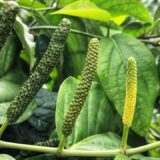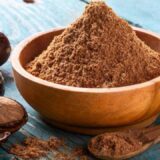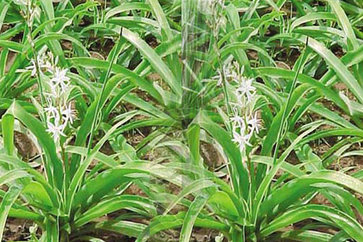What are Prakruti and Vikruti in Ayurveda?
Ayurveda, the ancient system of holistic healing, has been practiced for thousands of years and continues to offer profound insights into health and wellness. At its core, Ayurveda emphasizes balance and harmony between the body, mind, and spirit.
Two of its most fundamental concepts—Prakruti and Vikruti—serve as the foundation for understanding an individual’s unique constitution and addressing imbalances that lead to disease. These principles guide Ayurvedic practitioners in diagnosing and treating health issues, ensuring personalized care tailored to each person’s needs.
In this article, we will explore the concepts of Prakruti and Vikruti in detail, examining their significance, relationship, and application in Ayurvedic practice. By understanding these principles, individuals can gain valuable insights into their health and take proactive steps to maintain balance and well-being.
Prakruti: The Inherent Constitution
Prakruti is a Sanskrit term that translates to “nature” or “basic trait.” In Ayurveda, it refers to an individual’s inherent physical and mental constitution, which is determined at the time of conception. Prakruti is a reflection of the unique combination of the three doshas—Vata, Pitta, and Kapha—within each person. This combination remains constant throughout a person’s life and influences their physical traits, emotional tendencies, and overall health.
The Three Doshas and Their Role in Prakruti
The three doshas—Vata, Pitta, and Kapha—are the fundamental energies that govern all biological processes in the body. Each dosha is associated with specific elements and functions:
- Vata (Air and Ether): Governs movement, including breathing, circulation, and nerve impulses.
- Pitta (Fire and Water): Controls digestion, metabolism, and energy production.
- Kapha (Earth and Water): Provides structure, stability, and lubrication to the body.
Every individual has a unique proportion of these doshas, which determines their Prakruti. For example, a person with a Vata-dominant Prakruti may have a lean build, dry skin, and a creative mind, while someone with a Pitta-dominant Prakruti may have a medium build, sharp intellect, and a tendency toward warmth.
Key Points About Prakruti:
- Represents the natural balance of doshas in an individual.
- Determines physical characteristics, such as body type, digestion, and energy levels.
- Influences mental and emotional tendencies, including stress responses and personality traits.
- Serves as the foundation for personalized health recommendations in Ayurveda.
Understanding one’s Prakruti is crucial for maintaining health and preventing disease. By aligning lifestyle, diet, and habits with their inherent constitution, individuals can promote balance and well-being.
Vikruti: The State of Imbalance
While Prakruti represents the natural state of balance, Vikruti refers to the current state of imbalance or disorder in the doshas. It arises when external or internal factors disrupt the equilibrium of the doshas, leading to physical or mental health issues.
Causes of Vikruti
Vikruti can result from a variety of factors, including:
- Poor diet and nutrition.
- Lack of exercise or excessive physical activity.
- Emotional stress and mental strain.
- Environmental changes, such as seasonal shifts.
- Lifestyle choices, such as irregular sleep patterns.
For example, a person with a Pitta-dominant Prakruti may experience an imbalance (Vikruti) if they consume too many spicy or acidic foods, leading to symptoms like heartburn or irritability.
Key Points About Vikruti:
- Reflects the dynamic and fluctuating state of the doshas.
- Can result from poor diet, stress, environmental changes, or lifestyle choices.
- Indicates the presence of disease or discomfort.
- Requires targeted interventions to restore balance.
Unlike Prakruti, which remains constant, Vikruti changes over time based on various factors. Identifying Vikruti is essential for Ayurvedic practitioners to design effective treatment plans that address the root cause of imbalance.
The Relationship Between Prakruti and Vikruti
The interplay between Prakruti and Vikruti is central to Ayurvedic practice. Prakruti serves as the baseline for health, while Vikruti highlights deviations from this natural state.
Key Aspects of Their Relationship:
- Prakruti is the blueprint of health, representing the ideal state of balance.
- Vikruti is the manifestation of imbalance, signaling the need for intervention.
- Ayurvedic treatments aim to restore Vikruti to Prakruti, bringing the body back to its natural state.
For example, if a person with a Kapha-dominant Prakruti experiences weight gain and lethargy (signs of Vikruti), an Ayurvedic practitioner may recommend a diet and lifestyle plan to reduce Kapha and restore balance.
The Role of Ayurvedic Practitioners
Ayurvedic practitioners play a crucial role in identifying and addressing Vikruti. They assess the patient’s Prakruti, evaluate the current state of imbalance, and recommend personalized treatments. These treatments may include:
- Dietary adjustments.
- Herbal remedies.
- Lifestyle modifications.
- Detoxification therapies (Panchakarma).
- Yoga and meditation practices.
By understanding both Prakruti and Vikruti, practitioners can provide holistic care that addresses the root cause of disease and promotes long-term wellness.
The Role of Prakruti in Disease Prevention and Wellness
One of the most powerful aspects of Ayurveda is its emphasis on prevention. By understanding one’s Prakruti, individuals can take proactive steps to maintain balance and prevent the onset of Vikruti.
Preventive Measures Based on Prakruti:
- Dietary Choices: Eating foods that balance one’s dominant dosha. For example, Vata types may benefit from warm, grounding foods, while Pitta types may thrive on cooling, hydrating foods.
- Lifestyle Practices: Adopting routines that align with natural tendencies, such as regular exercise and adequate rest.
- Seasonal Routines (Ritucharya): Adapting to environmental changes by adjusting diet and lifestyle according to the seasons.
- Mindfulness and Stress Management: Practicing meditation, yoga, and other techniques to maintain emotional balance.
This proactive approach helps individuals stay in harmony with their natural constitution, reducing the risk of imbalances and promoting overall health.
The Analogy of Body Temperature: Prakruti and Vikruti in Action
To better understand Prakruti and Vikruti, consider the analogy of body temperature:
- Prakruti is like the average body temperature of 98.4°F, representing the natural state of balance.
- Vikruti is like a fever, where the body temperature rises due to an imbalance or illness.
Just as a fever signals the need for treatment to restore normal body temperature, Vikruti indicates the need for Ayurvedic interventions to bring the doshas back into balance.
Example of Prakruti and Vikruti in Daily Life
Imagine a person with a Vata-dominant Prakruti who experiences anxiety and insomnia (signs of Vikruti). This imbalance may result from factors like excessive travel, irregular meals, or emotional stress. To restore balance, the individual may adopt practices such as:
- Eating warm, nourishing meals at regular intervals.
- Practicing grounding activities like yoga and meditation.
- Establishing a consistent sleep routine.
By addressing the root cause of the imbalance, the individual can return to their natural state of health (Prakruti).
Practical Applications of Prakruti and Vikruti in Modern Life
In today’s fast-paced world, the principles of Prakruti and Vikruti offer valuable guidance for maintaining health and well-being. Here are some practical ways to apply these concepts in daily life:
1. Personalized Nutrition
Understanding one’s Prakruti can help individuals make informed dietary choices. For example:
- Vata Types: Focus on warm, moist, and grounding foods like soups, stews, and root vegetables.
- Pitta Types: Opt for cooling, hydrating foods like cucumbers, melons, and leafy greens.
- Kapha Types: Choose light, dry, and warming foods like legumes, spices, and bitter greens.
2. Lifestyle Adjustments
Aligning daily routines with one’s Prakruti can promote balance and prevent imbalances. For example:
- Vata Types: Establish a regular routine with ample rest and relaxation.
- Pitta Types: Avoid overexertion and incorporate calming activities like swimming or walking.
- Kapha Types: Engage in regular physical activity and avoid excessive sleep.
3. Seasonal Awareness
Adapting to seasonal changes is a key aspect of Ayurveda. For example:
- Winter (Kapha Season): Focus on warming foods and activities to counteract cold and dampness.
- Summer (Pitta Season): Emphasize cooling foods and hydration to balance heat.
- Autumn (Vata Season): Incorporate grounding practices and nourishing foods to stabilize energy.
4. Mind-Body Practices
Incorporating mind-body practices like yoga, meditation, and pranayama (breathwork) can help maintain doshic balance and promote overall well-being.
FAQs
1. What is the difference between Prakruti and Vikruti?
Prakruti refers to your natural, unchanging constitution, determined at birth, whereas Vikruti is the current state of imbalance in your body, mind, or emotions, which can change over time due to environmental factors, lifestyle, or diet.
2. What is Vikruti in Ayurveda?
Vikruti in Ayurveda refers to the imbalance or dysfunction in the body, mind, or spirit. It is the condition that arises when the natural balance of the doshas (Vata, Pitta, and Kapha) is disturbed.
3. What are the 8 Prakriti types in Ayurveda?
Ayurveda recognizes 8 Prakriti types, each determined by the predominant doshas (Vata, Pitta, and Kapha). These types include combinations like Vata-Pitta, Pitta-Kapha, Kapha-Vata, and others, each describing different physical and mental traits.
4. What is the difference between Prakruti and Prakriti?
“Prakruti” and “Prakriti” refer to the same concept of your natural constitution. The difference is purely in spelling; both terms describe your inherent dosha balance and physical and mental characteristics.
5. What is meant by Prakruti?
Prakruti is your unique, inherent constitution, determined by the balance of the three doshas (Vata, Pitta, and Kapha) at the time of birth. It represents your natural tendencies in body, mind, and emotions.
6. What is an example of Vikriti?
An example of Vikriti could be a Pitta-type person experiencing irritability, skin breakouts, or digestive issues due to an excess of Pitta in their system. This is an imbalance that disrupts their natural state of health.
7. What is our Prakruti?
Your Prakruti is the natural constitution you’re born with, which is a unique combination of the three doshas (Vata, Pitta, and Kapha). It dictates your physical traits, temperament, and tendencies.
8. What is Garbha Vikruti?
Garbha Vikruti refers to the imbalances that may occur in the fetus during pregnancy. These imbalances can affect the baby’s health and development, and Ayurveda offers guidance on maintaining balance during pregnancy for optimal health.
9. What do you mean by Prakriti Vikriti?
Prakriti Vikriti refers to the relationship between your inherent constitution (Prakruti) and the current state of imbalance (Vikruti) in your body or mind. The goal is to restore balance between the two to achieve health.
10. Which Prakruti is best?
In Ayurveda, no Prakruti is considered “better” than another. Each constitution has its strengths and weaknesses. The goal is to understand and maintain balance according to your individual Prakruti.
11. What are the 24 Tattvas of Prakruti?
The 24 Tattvas are the essential elements and principles of creation in Ayurveda. They include the five elements (earth, water, fire, air, ether), as well as bodily functions, senses, mental states, and other fundamental aspects of life.
12. What are the three Agnis?
The three Agnis are digestive fires in Ayurveda: Jatharagni (the digestive fire responsible for digestion), Bhutagni (which processes the five elements), and Dhatvagni (which governs the transformation of tissues).
By understanding and respecting these principles, individuals can take charge of their health, prevent disease, and restore balance when needed. Ayurveda’s holistic approach, rooted in Prakruti and Vikruti, empowers people to lead healthier, more harmonious lives, fostering well-being in the body, mind, and spirit.

























